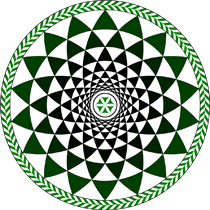Speaker
Mr
Wojciech Tomczyk
(Institute of Physics, Jagiellonian University, Kraków)
Description
The discovery of ferroelectric liquid crystals in 1974 by Meyer et al. [1] and later antiferroelectric by Chandani et al. [2] resulted in conducting many researches over these materials due to their promising applications [3]. The aim of this work was to study the molecular dynamics of two homologous thermotropic liquid crystal compounds, in short 6F4BBiOC8 [4] and 8F2BBiOC8. Both of the compounds studied exhibit two liquid crystal phases: ferroelectric SmC* and antiferroelectric SmC*A, at heating and cooling as well. Based on the Density Functional Theory [5,6], the optimized geometries of 6F4BBiOC8 and 8F2BBiOC8 molecules were acquired, which onward led to calculate the resultant dipole moment. By means of the reversal current method [7] the spontaneous polarization for both compounds was measured and calculated to be 84 nC/cm2 and 97 nC/cm2 for 6F4BBiOC8 and 8F2BBiOC8, respectively. Using frequency domain dielectric spectroscopy [8] (1 Hz – 10 MHz) one relaxation process was registered in the ferroelectric phase for both compounds. It was identified as collective Goldstone mode. Similarly, in the antiferroelectric phase for both compounds one relaxation mode was detected and identified as collective non cancellation mode (NCM, antiferroelectric Goldstone). Additionally, for 8F2BBiOC8 compound in the antiferroelectric phase, the second relaxation process was revealed. It was identified as a molecular S-process. Significant influence of ionic conductivity was observed in the electrooptic and dielectric spectroscopy measurements.
Acknowledgments:
The research was carried out with the equipment purchased thanks to the financial support of the European Regional Development Fund in the framework of the Polish Innovation Economy Operational Program contract no. POIG.02.01.00-12-023/08). The calculations were done at the ACK CYFRONET (AGH, Kraków, Poland) using Materials Studio 5.5 within Accelrys polish national license.
References:
[1] Meyer R. B., Liebert L., Strzelecki L., Keller P., J. Phys. Lett. (Paris) 36, p. 69 (1975).
[2] Chandani A. D. L., Górecka E., Ouchi Y., Takezoe H., Fukuda A., Jpn. J. Appl. Phys. 28, p. L1265 (1989).
[3] Lagerwall S. T.; "Ferroelectric and Antiferroelectric Liquid Crystals"; Wiley-VCH; 1999.
[4] Tomczyk W., Marzec M., Juszyńska-Gałązka E., Dąbrowski R., Ziobro D., Wróbel S., Massalska-Arodź M., Acta Phys. Pol. A 124, p. 949 (2013).
[5] Delley B. K., J. Chem. Phys. 92, p. 508 (1990).
[6] Delley B. K., J. Chem. Phys. 113, p. 7756 (2000).
[7] Ahuja K., Raina K. K., Jpn. J. Apl. Phys. 39, p. 4076 (2000).
[8] ”Relaxation Phenomena, Liquid Crystals, Magnetic Systems, Polymers, High-Tc Superconductors, Metallic Glasses”, Eds. W. Haase, S. Wróbel, Springer-Verlag, Heidelberg 2003.
Author
Mr
Wojciech Tomczyk
(Institute of Physics, Jagiellonian University, Kraków)
Co-authors
Dr
Dorota Węgłowska
(Military University of Technology, Warszawa, Poland)
Dr
Ewa Juszyńska-Gałązka
(Institute of Nuclear Physics PAN, Kraków)
Dr
Monika Marzec
(Institute of Physics, Jagiellonian University, Kraków)

